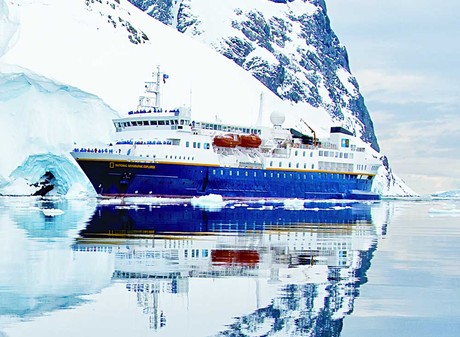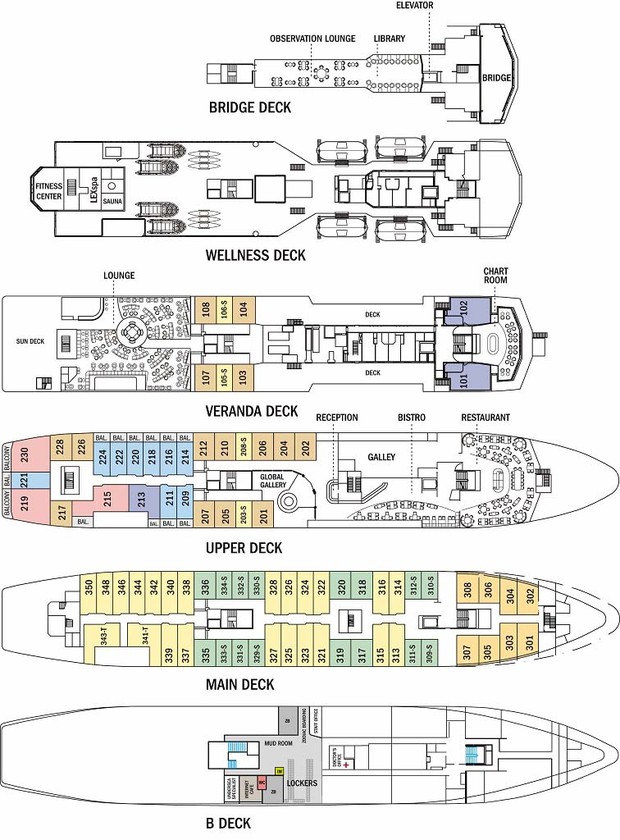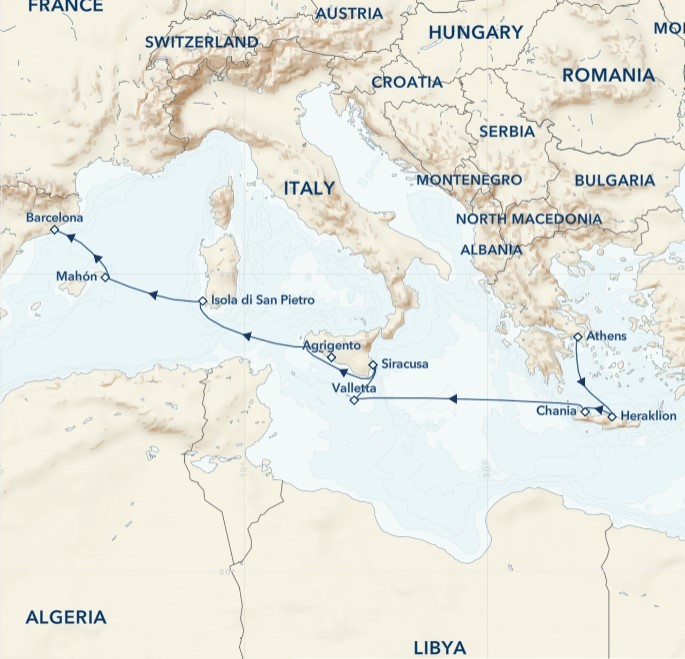The Mediterranean’s far-reaching empires and vivid cultures come to life as we sail from Athens to Barcelona. Alongside historians, archaeologists, and National Geographic experts, explore ancient ruins in Greece and Sicily, delve into medieval history and architecture in Malta, and see vestiges of mysterious prehistoric cultures in Menorca. Trace the arc of history from classical Greece to the Age of Discovery, voyaging to the ancient port cities of Heraklion, Valletta, and Siracusa. Along the way, sample regional delicacies like Greek cheese and Marsala wine.
- Walk amidst iconic classical ruins like the Parthenon, Palace of Knossos, and the Valley of the Temples on this fascinating four-country voyage
- Explore vestiges of Greek, Roman, Ottoman, Talayotic, and Minoan civilizations alongside expert historians and archaeologists
- Marvel at the transparent blue waters of Malta and the stunning natural beauty of Crete’s Gorge of Samaria—a UNESCO World Biosphere Reserve
- Discover the Sardinian island of Isola di San Pietro, whose population's unique history personifies the blending of cultures across the Mediterranean
- Sample regional specialties like Marsala wine, Greek cheese, and tuna and sardines from Sardinia
There are no future departures for this trip at this stage.
National Geographic Explorer

Vessel Type: Luxury Expedition
Length: 108 meters
Passenger Capacity: 148 (single & twin cabins)
Built / Refurbished: 1982 / 2008
National Geographic Explorer is a state-of-the-art expedition ship. It is a fully stabilized, ice-class vessel, enabling it to navigate polar passages while providing exceptional comfort. It carries kayaks and a fleet of Zodiac landing craft. An Undersea Specialist operates a remotely operated vehicle (ROV) and sophisticated video equipment, extending access to the underwater world.
Public areas: Bistro Bar; Chart Room; Restaurant; Global Gallery; Library, Lounge with full service bar and state-of-the-art facilities for films, slideshows and presentations; Mud Room with lockers for expedition gear, and Observation Lounge. Our “Open Bridge” provides guests an opportunity to meet our Officers and Captain and learn about navigation.
Meals: Served in single seatings with unassigned tables for an informal atmosphere and easy mingling. Menu is international with local flair.
Cabins: All cabins face outside with windows or portholes, private facilities and climate controls.
Expedition Equipment: Zodiac landing craft, kayaks, Remotely Operated Vehicle (ROV), hydrophone, SplashCam, underwater video camera, Crow’s Nest remote controlled camera, video microscope, snorkeling gear.
Special Features: A full-time doctor, Undersea Specialist, LEX Photo Specialist and Video Chronicler, Internet Cafe and laundry.
Wellness: The vessel is staffed by two Wellness Specialists and features a glass enclosed Fitness Center, outdoor stretching area, two LEXspa treatment rooms and Sauna.



